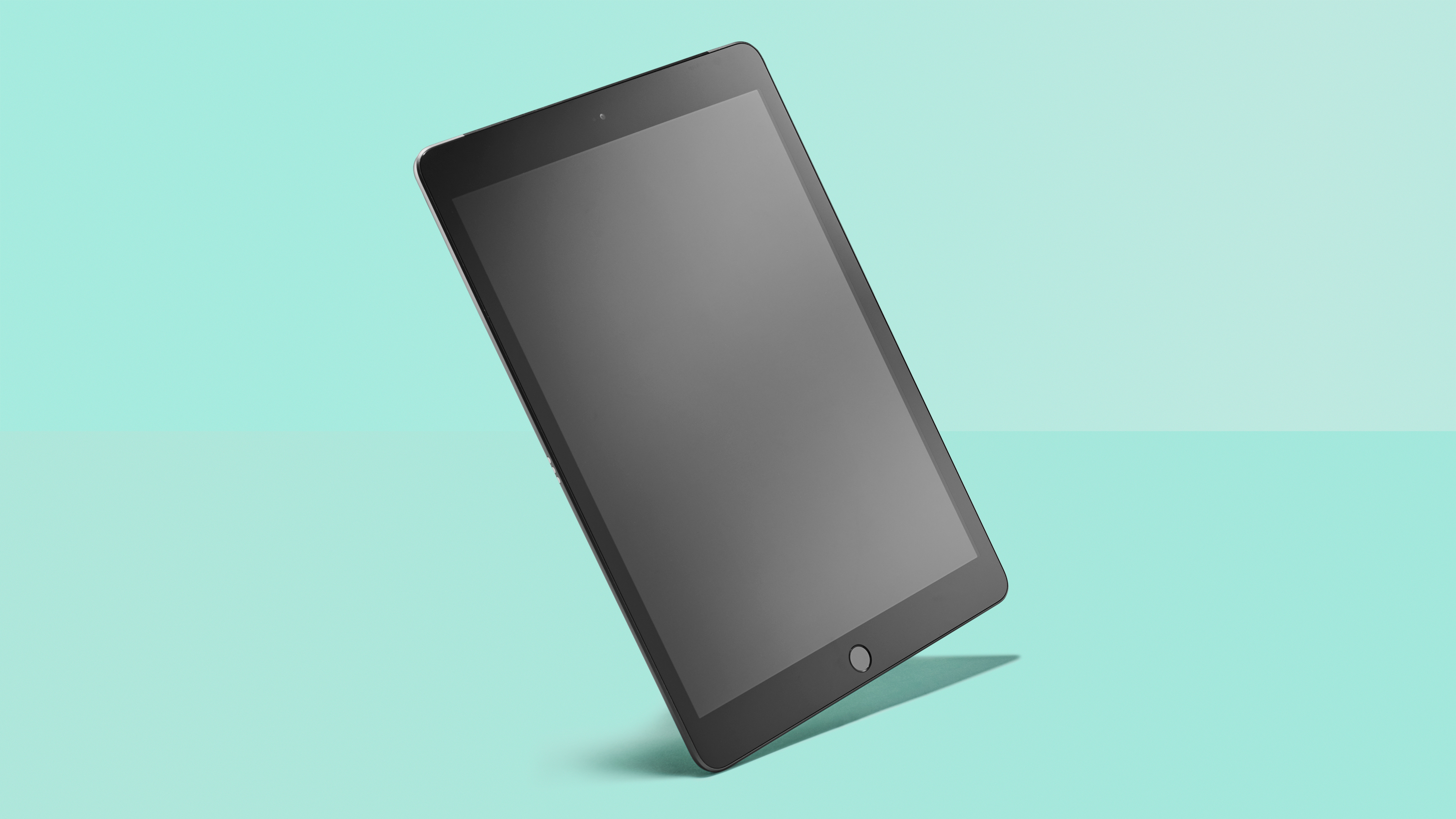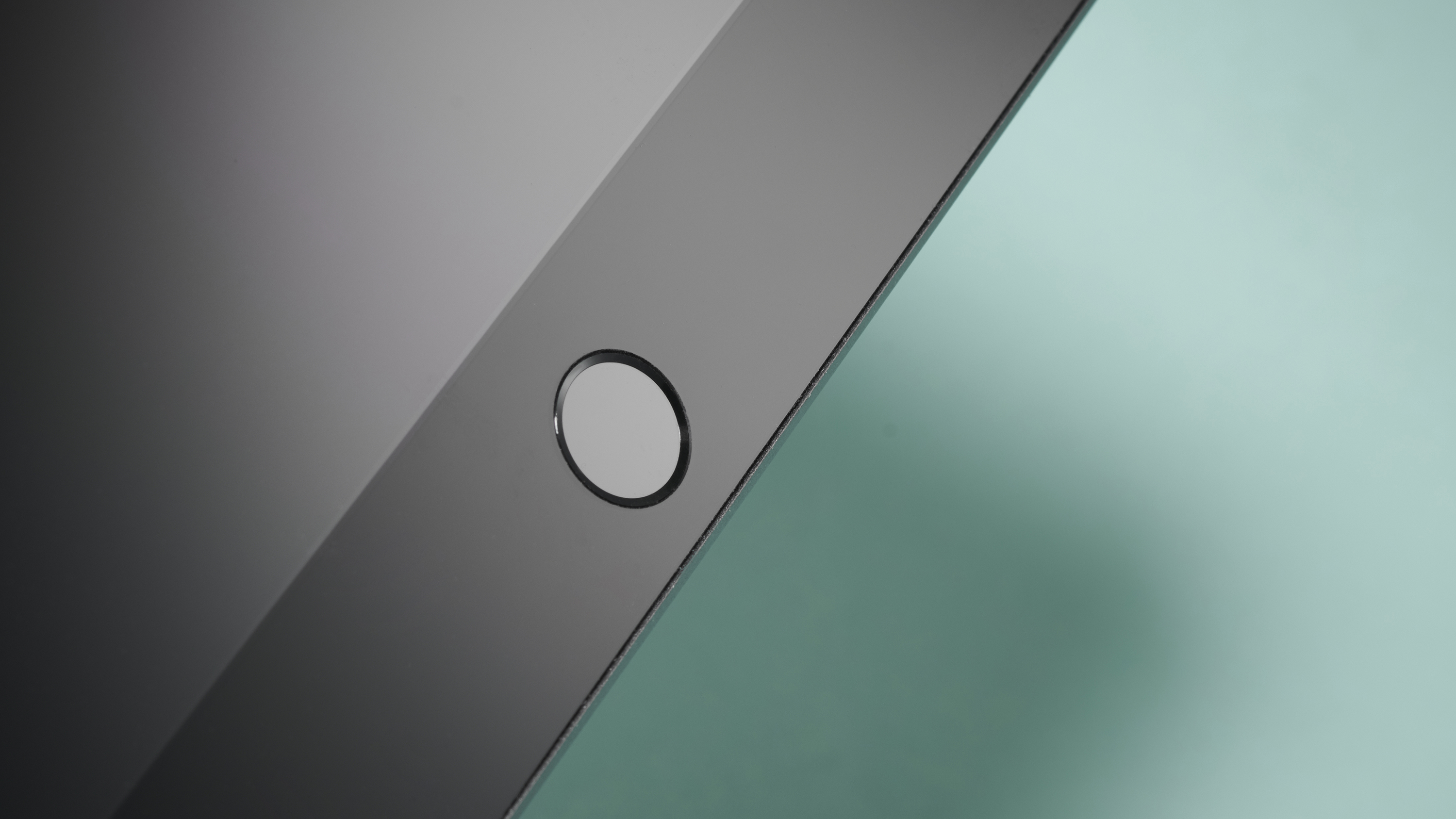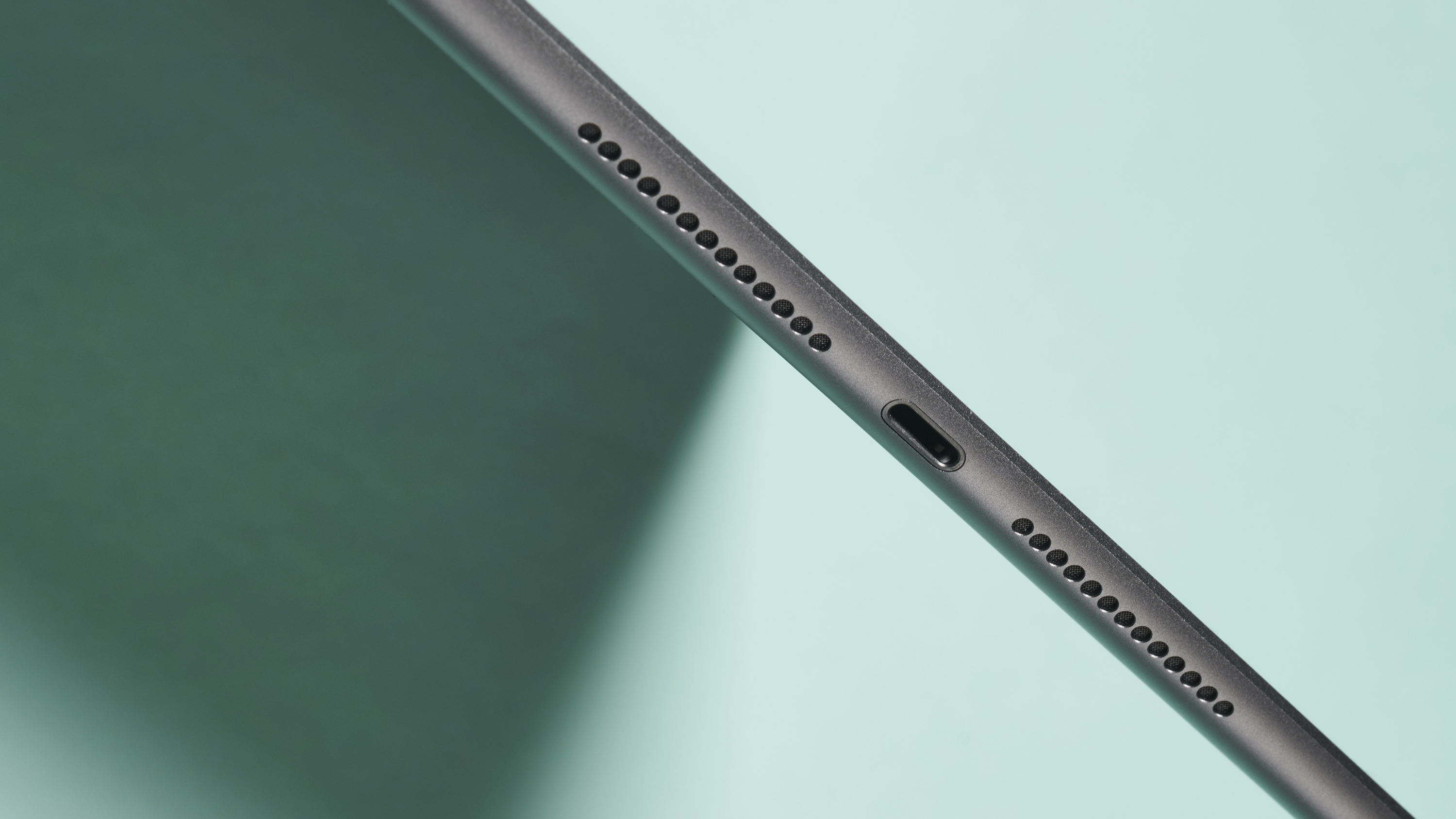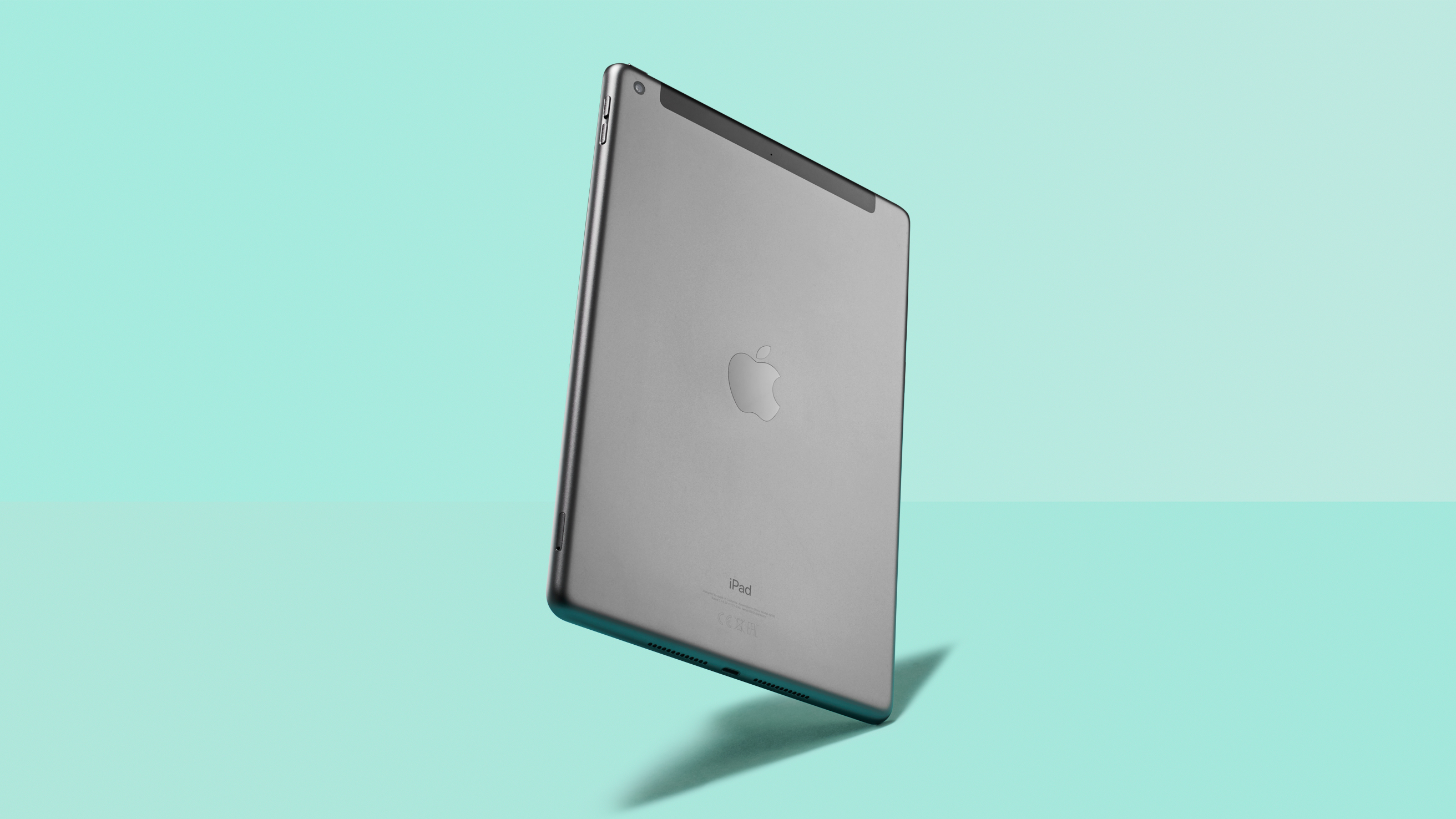Apple iPad (2019) review: the new iPad 10.2-inch is the best cheap tablet you can buy
Apple's new cheapest iPad brings the biggest physical change in years to the budget option


The Apple iPad 10.2 (2019) is easily the best tablet for this money. It's great for kids, fast as a computer for the sofa, and way more capable than its price suggests.
-
+
Nice 10.2-inch screen
-
+
Zippy to use
-
+
Great multitasking features
-
+
Pencil and Smart Keyboard support
-
-
No True Tone screen
-
-
Keyboard case is expensive
-
-
Same A10 chip as older models
Why you can trust T3
Welcome to T3's Apple iPad 10.2 (2019) review, which takes a look at the new lowest-price tablet in Apple line-up, also known as the iPad 7th generation.
For £349, you get a tablet that's physically nearly identical to the pricier iPad Air – it's a little thicker, but the build quality is just as solid, and doesn't feel like any corners have been cut.
And one of the new iPad's strengths is that it also doesn't feel cut back when you're using it. It's still an extremely fast, slick slate. For many it will be the tablet to look out for during the Black Friday sales.
For most people, it's all the tablet they'll really need – a sharp 10.2-inch screen, a speedy Apple A10 processor and tons of apps are what make all the difference.
The big question is whether the features of this basic model are everything you need, or whether you should pay the extra to upgrade to the iPad Air. Let's dig in.
- Apple iPad Air (2019) review
- Our full list of the best tablets
- Prefer Android? Here's our Samsung Galaxy Tab S6 review
APPLE iPAD (2019) REVIEW: PRICE AND SPECS
For the £349 base price of the new iPad 10.2-inch, you get 32GB of storage built in (there's no microSD expansion in any iPad).
You can step that up to 128GB of storage for £449 total. This might be a good idea if you plan to use it very heavily for photos, but as a light media tablet, the 32GB base level of storage should be fine.
Get all the latest news, reviews, deals and buying guides on gorgeous tech, home and active products from the T3 experts
That said, even if you're thinking you want more than 32GB of space, we're not sure we'd choose the 128GB version of this tablet – for £479 (just £30 more), you could get a 64GB iPad Air, which is a pretty good amount of storage, and has a bunch of other improvements too, which we'll come to in a moment.
The iPad 10.2-inch comes in a Wi-Fi only version, which are the prices given above, but you can also get it with 4G connectivity. That costs £479 for the 32GB model, or £579 for the 128GB option.

When you look at the lower end of the iPad line-up, you'll see a bunch of models that come very close, and even overlap, in price.
This iPad is the starting model at £349. The next model up is the iPad mini, which starts from £399. For that £50 extra, you get a more powerful processor (the A12), a wide colour display with True Tone tech (see the next section for details) that's sharper, and 64GB of storage. The big flip side is that it only has a 7.9-inch screen – easily big enough to play games, watch movies, edit photos and use apps… but only one at a time. The iPad mini is capable showing more than one app a time, but every feels so cramped that it's kind of pointless.
The 10.2-inch iPad is much better suited to multi-tasking with split-screen apps. We went into the strengths and weaknesses of Apple's smaller tablet a lot more in our iPad mini (2019) review, but basically: if you're thinking of getting this tablet as a gaming/video/creativity device, have a good think about the iPad mini, because it's more futureproof, easier to carry and has more storage for just £50.
Next up the price list is the iPad Air, which starts from £479. That has nearly the same specs as the iPad mini, including 64GB of storage and the more powerful A12 processor. However, it has nearly the same physical dimensions as the iPad we're reviewing here, despite having having a slightly larger 10.5-inch screen. The only difference in the body is that the iPad Air is slightly thinner and lighter, though you'd only really notice with both in the hand for comparison.
The most noticeable difference between these two devices is the screen, which is distinctly better on the iPad Air for reasons we'll go into in just a moment, but isn't so much better than it makes this tablet look bad.
But it emphasises what we were saying before: if you wanted more space than the 32GB iPad offers, we'd suggest spending £479 on the iPad Air to upgrade loads of different areas as well as getting 64GB of space, rather than spending £449 just on 128GB of space.
In terms of design, it looks the same as most iPads have for a long time, with a Home button and fingerprint sensor at one end, and front-facing camera at the other. It's pretty old-fashioned at this point, but we can live with that for the price.
There's a subtle port on one side of the iPad, which can be used to connect Apple's Smart Keyboard, which is a cover that folds into a stand and a keyboard. It's a nice setup, and if you'll use it to write on, a really good addition… but it's damn expensive at £159. Almost unjustifiably so, when you can get Bluetooth keyboards for so much cheaper, but it does work really well. We wish it came in colours other than grey, though.
There's a Lightning port for charging and connecting accessories, and a 3.5mm jack for headphones.

APPLE IPAD (2019) REVIEW: SCREEN AND SPEAKERS
The 10.2-inch screen on this new iPad is 0.5 inches bigger than the model it replaces, which doesn't seem like much, but makes a good level of difference, especially if you're going to run apps side by side. It stops each app feeling a bit small in the way they do on its 9.7-inch predecessor, and makes them feel more like two usable windows.
The iPad Air has a 10.5-inch screen, which gives you a little more space again, but it doesn't make as big a difference as stepping from 9.7 to 10.2 does.
The display is 2160x1620, and is exactly the same pixel density as the iPad Air, so it's no less sharp. There's tons of detail, even though it's not as sharp as phone screens – but you don't tend to hold it as close, so it still looks just as good, really.
The display is bright, colourful, and really appealing. Apple's attention to detail is here, with great calibration of the display for really natural colours.
Contrast is fine – there's no HDR support, and the screen isn't bright enough anyway. You see what's going on fine, but there are no super-cinematic blacks.
Speaking of brightness, though, we should talk about how the iPad Air screen is noticeably better. Though the two tablets are rated for the same brightness, the iPad Air is visibly more vibrant.
We think a few things make the difference here: the iPad Air's screen is laminated, which brings the pixels closer to the surface; there's an anti-reflective coating that can help the brightness punch out more; and the iPad Air supports a wide colour gamut, so its broader range of colours can come across as more vibrant.
Each is a fairly small change, but it adds up to make the iPad Air's screen feel like an improvement worth paying for.
That goes double because the iPad Air includes True Tone, an option that changes the colour temperature of the screen automatically depending on ambient light in the room, so it's much more comfortable on the eyes, and avoids a nasty blue tone.
This really is a killer feature of the Apple products that have it – it seems like a little thing, but once you try it, everything without it feels so much worse. We wish the cheaper iPad had it, but obviously things have to be cut for cost.
Basically, the screen here perfectly nice, and is a generous size. Depending on what you want to use it for, maybe you don't need anything nicer. But if you're thinking of using it a lot, especially reading in the evening, the iPad Air is even better.
When it comes to speakers, we couldn't tell much difference between it and the other iPads. It's pretty loud, has a good balance, and sounds meaty enough to give movies enough heft to impactful, and give music a backbone. It's nothing compared to a dedicated speaker, but it does the job perfectly well.

APPLE IPAD (2019) REVIEW: PERFORMANCE AND SOFTWARE
The Apple A10 chip here is a couple of years behind the A12 you'll find in newer iPad models, but it's no slouch at all. For opening apps and flitting around iOS, everything is very slick and fast – no slower than any other iPad, really. Some intensive apps, and especially games, will open a bit faster on more powerful devices, but the difference is less than you'd think.
Going into Garageband and getting serious by filling it with over 20 tracks of loops caused some slowing down when then trying to scroll up and down all the tracks, but we did the same thing with the iPad Air and it also responded more slowly, so the new cheaper iPad still managed to hold its end up well.
We tried creating giant 33-megapixel images in the Photoshop-like Pixelmator app and filling them with photos and it was fine. It's a very capable computer, for £349. Our only concern would be future-proofing – being a few years behind the chip in more expensive iPads might mean it stops getting software updates more quickly than those, but given that Apple has provided the iPhone 6S at least five years of software support with the latest update, this is more in the 'nice to have' column. That said, even if does get updates, it may not respond as zippily in the future – the A12 would be far more likely to stay capable.
It comes with iPadOS, which is effectively a side version of iOS 13 that's customised for iPad. It includes split-screen multitasking (including two windows of the same app), drag and drop between apps, pop-out video viewing, and a giant suite of apps that really make use of the tablet-sized screen.
Apple provides lots of great stuff for free, including equivalents of Word, Excel and Powerpoint (though Microsoft also makes all those available for free), plus apps with great photo-editing features, a smart email client, a desktop-class web browser, a 4K-capable multi-track video editor, a music maker packed with touchscreen instruments that are easy to play and record… it feels like you can do anything on it.
And with all the games on the App Store (and Apple Arcade giving you a stupid amount of quality microtransaction-free games for just £5 per month), it's a really good portable console, too. You can connect Xbox and PlayStation controllers to play compatible games, including Fortnite.
There's also support for Apple Pencil, which works well, and makes it a great digital notepad, both for drawing or note-taking. There's no neat storage solution for the stylus, though, and it charges by sticking out of the end of the tablet, which is pretty clumsy.
The Apple Pencil isn't included – it's £89, which is a pretty typical cost for a higher-end stylus. There is a cheaper equivalent, called Logitech Crayon for iPad, which is £59. It uses the Pencil's tech, but is chunkier and made for kids, though works for all and doesn't look too cutesy.
When it comes to battery life, all iPads are rated for about 10 hours of video, and usually get much more than that if you're just doing some web browsing here and there – they tend to go for days and days if you're just picking them every so often for a short burst.
That's the case here as well – during out testing, it lasted really well for a few days, including us trying out advanced photo editing, playing with Garageband, and watching videos in the kitchen.
It comes with a 12MP rear camera that's extremely middling – it doesn't have so many fancy processing tricks that newer models of iPad and iPhone do, and you can tell. It can take nice pics, but doesn't wow.
The 1.2MP front camera has even less going on… but hey, it works.

APPLE IPAD (2019) REVIEW: SHOULD YOU UPGRADE?
If you bought the previous cheapest iPad, with a 9.7-inch screen, then definitely not. This is actually practically the same machine, but with a slightly bigger screen, and it doesn't make such a difference on its own that it's worth paying for a whole new tablet.
If you're on an older tablet, then this could be a good choice for sure. As we've said, though, it's really question of whether it's this, the iPad mini or the iPad Air – hopefully everything in this review has helped you reach that conclusion.
APPLE IPAD (2019) REVIEW: VERDICT
To call something 'good enough' is usually damning with faint praise. In the case of this iPad, it's just good enough to be excellent – especially for the price.
It's a really great tablet – there's no obvious compromise on performance, it's a generous screen size, the battery life is good, and it's easy to expand with a keyboard cover or Apple Pencil.
But we strongly encourage you to look at both the iPad mini and iPad Air as alternatives, if you can spend the extra money. The iPad mini's size difference makes it less of a slam-dunk option, but its closeness on price means for a lot of people, it could be a sweet deal.
The iPad Air, though, has a marginally larger screen that's noticeably nicer, thinner body, slightly lighter weight, better camera, and guaranteed future-proof faster processor, plus extra storage. For £130 more, that's a really solid set of upgrades.
We're not saying everyone should go for the more expensive option. If you're looking for something to play around and browse on, this is fantastic, and it's definitely capable of more when needed. But if you plan to be more productive with your tablet, we'd choose the Air.

Rob has been writing about computing, gaming, mobile, home entertainment technology, toys (specifically Lego and board games), smart home and more for over 15 years. As the editor of PC Gamer, and former Deputy Editor for T3.com, you can find Rob's work in magazines, bookazines and online, as well as on podcasts and videos, too. Outside of his work Rob is passionate about motorbikes, skiing/snowboarding and team sports, with football and cricket his two favourites.

